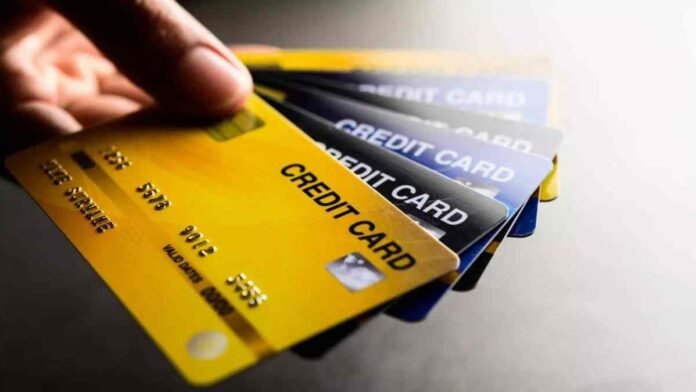Credit cards for bad credit are increasingly becoming essential tools for people working to rebuild their financial lives. As lending standards shift and banks grow more selective, new card options and strategies are emerging to help those with less-than-perfect credit gain access while taking steps to improve their scores.
Key Points Summary
⚡ Banks are tightening credit approvals, limiting access for people with poor credit.
⚡ Secured cards remain the most dependable choice for rebuilding credit.
⚡ Some secured cards now come with cashback rewards, creating extra value.
⚡ Smart usage—low balances, on-time payments, and responsible management—remains the fastest path to improvement.
Banks Are Raising the Bar
In 2025, many banks are focusing on higher-credit customers and pulling back from riskier lending. While this means fewer opportunities for applicants with poor credit, it also emphasizes the importance of smart strategies for those determined to rebuild.
Applicants with bad credit often face higher APRs, lower limits, and stricter approval processes. But specialized cards—particularly secured products—are designed to provide a pathway back into the credit system.
Why Secured Credit Cards Lead the Way
Secured credit cards continue to dominate the market for people looking to recover from financial setbacks. With a refundable deposit that sets the credit limit, issuers reduce their risk and can approve more applicants.
Advantages of secured cards include:
- Higher approval odds
- Affordable or zero annual fees
- Reporting to all three major credit bureaus
- Upgrade potential after responsible use
Cashback Rewards on Secured Cards
A major shift in 2025 is the arrival of secured cards that offer cashback rewards. These cards combine the credit-building power of traditional secured products with benefits once reserved for prime customers.
Responsible cardholders now have the chance to rebuild their credit while earning money back on purchases. This makes disciplined spending and repayment even more rewarding.
Secured vs. Unsecured Options
Some borrowers are tempted by unsecured cards marketed toward bad credit. However, these often come with high annual fees, hidden charges, and very low limits.
Quick Comparison
| Feature | Secured Card | Unsecured Card for Bad Credit |
|---|---|---|
| Security Deposit Required | Yes (refundable) | No |
| Approval Odds | Higher | Lower |
| Typical Fees | Low or $0 | High |
| Credit Limit | Based on deposit | Very low |
| Rewards Potential | Increasing (cashback) | Rare |
| Upgrade Path | Common after 6–12 months | Limited |
For most consumers, secured credit cards remain the safer, smarter route.
How to Choose the Right Card
When shopping for a card to rebuild credit, pay attention to:
- Deposit amount: Some cards start at $200 deposits, while others allow higher for bigger limits.
- Annual fees: Avoid cards with high recurring charges.
- Credit bureau reporting: Ensure all three major bureaus receive your data.
- Upgrade opportunities: Look for cards that transition you to unsecured options.
- Rewards: If available, choose a card with cashback but not at the expense of higher fees.
Best Practices for Rebuilding Credit
Owning a card is just the first step. How you use it determines whether your score rises or stays stagnant.
Key strategies include:
- Keeping balances under 30% of the credit limit
- Always paying on time
- Paying in full to avoid interest when possible
- Using the card regularly, but not excessively
- Monitoring your credit score monthly
Why the Market Is Shifting
The credit card market in 2025 is balancing two forces:
- Rising risk of defaults, leading banks to tighten approvals
- Demand for rebuild tools, pushing issuers to design new secured products with added perks
This dual shift means that while access may be harder, disciplined borrowers who secure a card and use it wisely are rewarded more than ever.
Final Thoughts
The market for credit cards for bad credit is evolving quickly. While banks are limiting approvals, secured cards remain a lifeline, offering both access and an opportunity to rebuild responsibly. With new cashback-secured products and clear upgrade pathways, motivated borrowers have better tools than ever to repair their credit standing.
If you’ve been rebuilding, what strategies are helping you most? Share your thoughts in the comments and help others on the same journey.
FAQ
Q1: Can I qualify for a credit card with bad credit?
Yes. Secured credit cards are the most accessible option, with approval tied to a refundable deposit.
Q2: Do secured cards actually improve my score?
Yes. Responsible use and consistent reporting to credit bureaus make them one of the fastest ways to rebuild.
Q3: Should I get an unsecured card for bad credit instead?
Usually no—unsecured cards for bad credit often have high fees and low limits, making secured cards a safer bet.
Disclaimer: This article is for informational purposes only and should not be taken as financial advice. Individual results may vary, and card terms differ by issuer.
